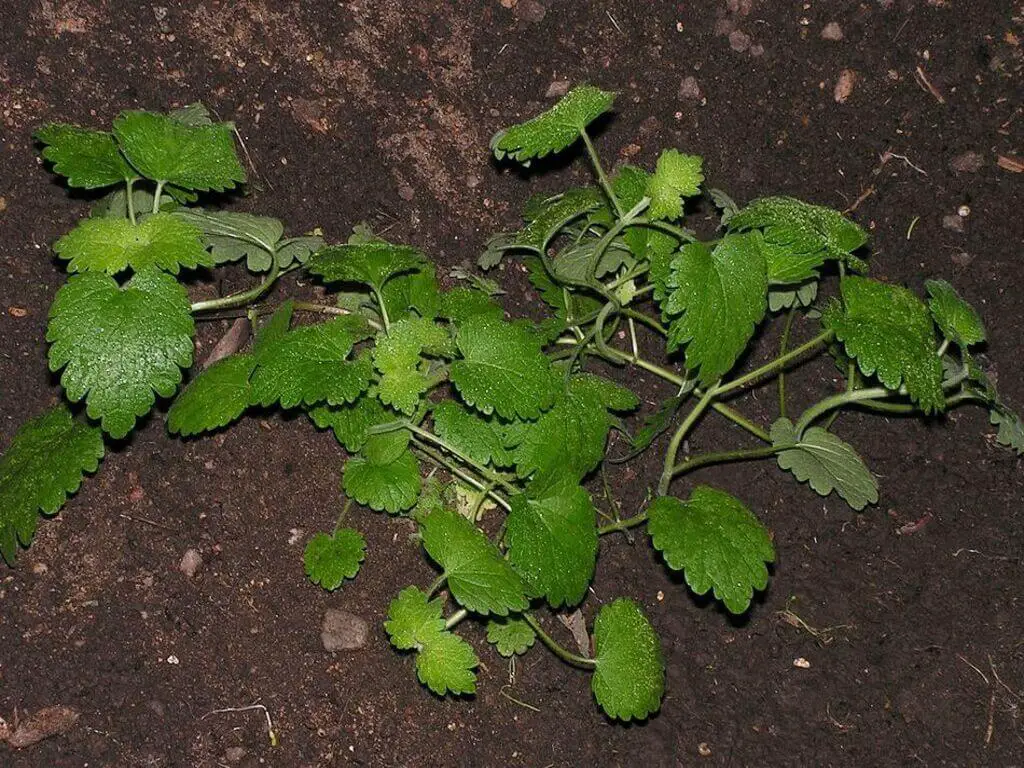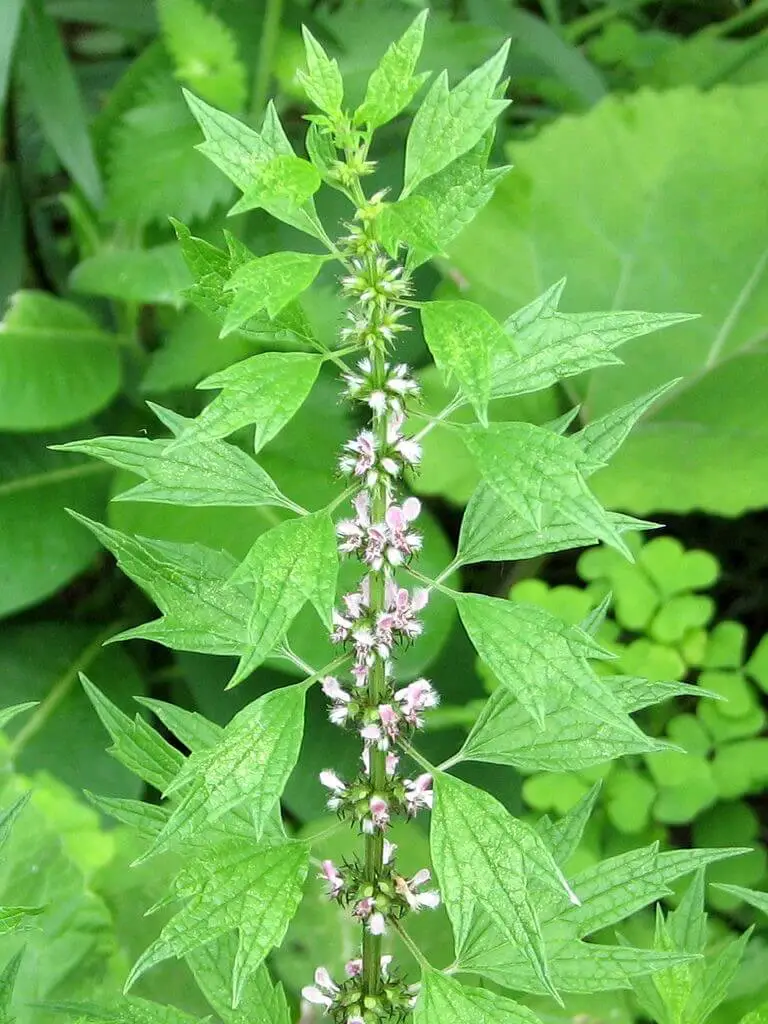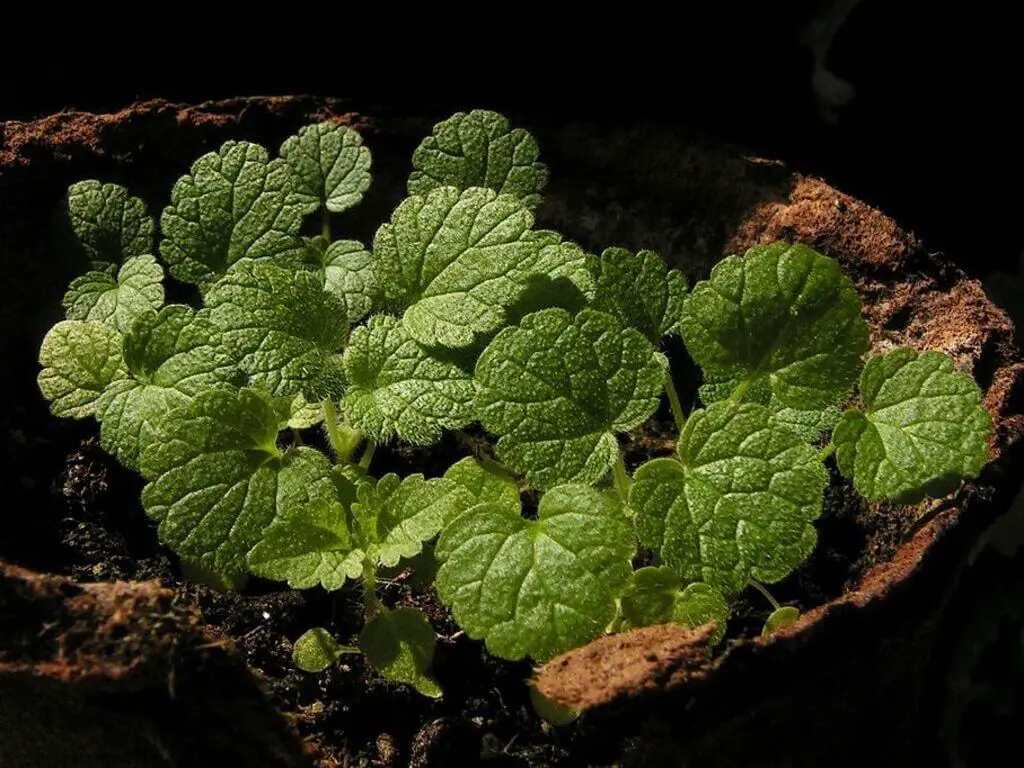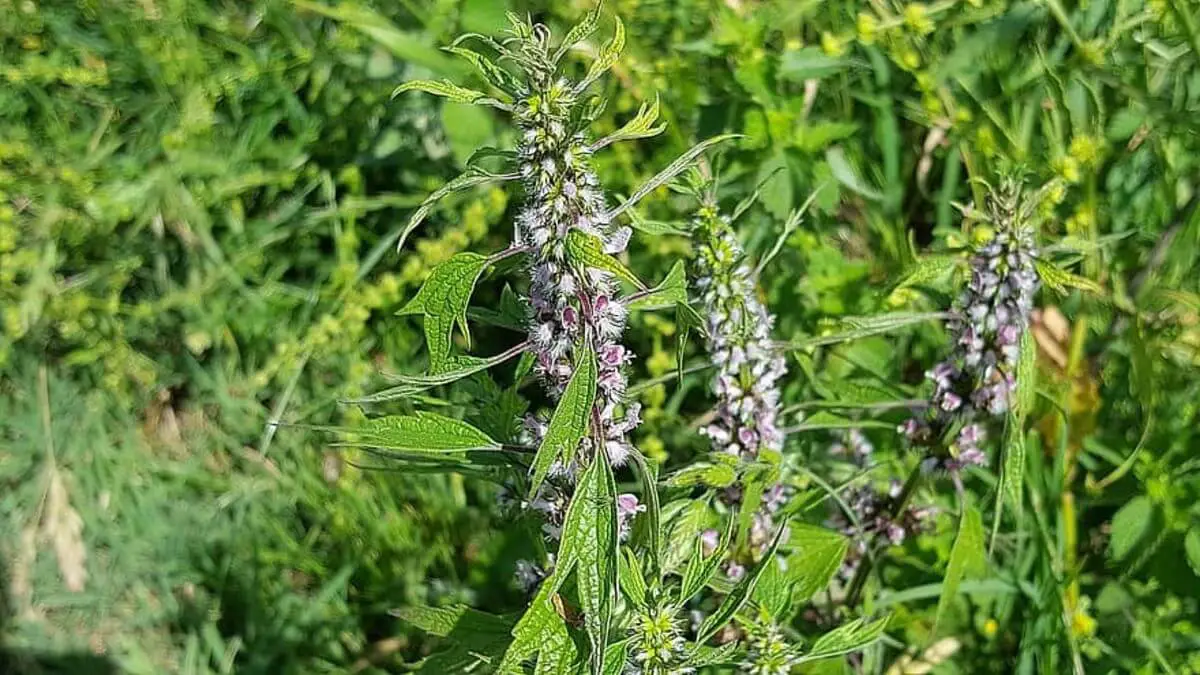Growing Motherwort Plants in Gardens
Motherwort plants are generally herbal plants. They are most widely used in the medical field. They cater to various medical applications including reducing stress, anxiety, and restlessness. Nowadays, you can find them almost anywhere including your backyards!
This article mainly focuses on Growing motherwort plants, their maintenance, and their uses. Prior to that, let us have a look at some information about the plant.
Motherwort plants (Leonurus cardiaca) belong to the mint family, Lamiaceae. Generally, Motherwort is a useful herbaceous perennial plant. It also has other common names including throw-wort, Lion’s tail (Leonotis leonurus,) and lion’s ear (Leonotis nepetifolia).
South-eastern Europe and Central Asia are the native lands of these plants. However, you can find them commonly almost everywhere on earth. They can naturalize themselves on many types of soils.
Table of Contents
Motherwort Plants – Description

Photo by Hajotthu (Wikimedia Commons) (CC BY 3.0)
Normally, motherwort plants have a type of squarish stem. Short hair clads around this stem. It is usually purple in color, specifically near the nodes.
The leaves sprout out oppositely in long petioles. These leaves are naturally palmately lobed (developing radially from a central point). They also have serrated margins (saw-tooth like appearance at margins).
Normally, the leaves at the bottom of the petioles have a three-pointed, wedge-shaped appearance. The leaves at the upper end of the patios usually appear with three to five-pointed edges.

Generally, the flowers appear on the upper portion of the plants in leaf axils. They have fine bracts usually with three lobes. Each flower has a bell-shaped calyx with five lobes. Usually, the flowers have about 8-12 mm long irregular corolla. This corolla has fused long tubes and twin lips. The upper lip is convex in shape and surrounded by white hair. The lower lip has three lobes and curved downwards.
There are two long and two shorter protruding stamens inside the flowers. Also, the fruit of the plant is usually a schizocarp’ with four chambers
Motherwort plants usually grow 60 to 100 cm (24 to 39 in) tall. Normally, the blooming season of these plants starts in July or August.
History
Some unconfirmed studies show western Europe’s consumption of motherwort plants from the 17th century onwards.
Some people also believe the theory of the introduction of motherwort plants by colonists during the 19th century. In fact, colonists used this plant as a bee forager’ for attracting bumblebees
Nowadays, this plant is spread so abundantly that, the people called it an invasive plant. For instance, you can find it almost anywhere including roadsides, rubbish dumps, waste ground vacant fields. Don’t be surprised if you see them in your own gardens!
Its ability to neutralize almost any surface is awesome! Very few plants exhibit this character.
Motherwort Plants – Propagation

Photo by H. Zell (Wikimedia Commons) (CC BY-SA 3.0)
Generally, some people consider motherwort plants as weeds. So, it is almost impossible to find the cultivated varieties in the market.
However, you can grow motherwort plants from seeds, transplantation, or by division methods.
This hardy perennial can naturalize itself in almost any environment. For best results, it is advisable to grow them in well-draining soil, amended with compost.
From Seeds
Cold stratification of Seeds
You can purchase the seeds from Amazon. First of all, check the instruction sheet (in the package) to find whether the seeds are cold stratified or not.
If not, you have to cold stratify them for a couple of weeks before planting. In this method, you are tricking the seeds to think, winter has just passed. So that they can sprout energetically and form new plants.
Alternatively, if you sow the seeds during late fall, cold stratification is not needed at all. The cold weather will take its own course!
To begin the cold stratification process, Soak the seeds in clean water for about 24 hours. Place the seeds in a plastic bag containing peat moss and sand. After that, seal the plastic bag and place it inside the refrigerator for a couple of weeks. Check the moisture content of the mixture regularly. If the mix turns dry, spray a little water into it.
After the stratification process is complete, you can sow the seeds in trays to grow indoors and transplant them later. You also can sow them directly in your gardens.
Planting Seeds
Sow the seeds just below the ground surface (1/8-inch-deep) in well-draining moist soil. Maintain the soil moisture so that it is not dry. You can see new seedling sprouting out within a week’s time! After that, thin the seedlings 2-3 feet apart.
Generally, motherwort plants are good self sowers! So, once established, they will multiply almost effortlessly.
You can also plant the seeds in trays safely indoors and transplant them after they grow.
Transplantation
If you grow the seeds indoors, wait until the seedlings grow 4-6 inches tall. Then, transplant them in the garden, spacing 2-3 feet apart.
Alternatively, you can also purchase live plants from amazon or any other nursery. Spacing 2-3 inched apart, transplant them directly in the gardens.
Divisions
Normally, motherwort plants grow quickly. They spread through the rhizomes developed underground. So, you can easily dig out the rhizomes, split them, and replant them in different areas in your garden.
Make sure to bury the divided rhizomes twice as deep as its width. It is advisable to do this during spring or fall.
Caring Motherwort Plants

Photo by Bff (Wikimedia Commons) (CC BY-SA 3.0)
The plant can grow in almost any type of soil, irrespective of sunlight or dark shades. This means you can grow them wherever you desire. Very few plants on earth have this characteristic, especially for gardening plants.
However, USDA recommends zones 4-8 to grow this plant. It is also advisable to grow this plant in mild alkaline soil with a PH of 7.7. This ensures the motherwort plants’ healthy growth.
Water the plant regularly at the initial stages. Generally, once this plant matures, it exhibits its drought-tolerant, hardy, and resilient characteristics. Due to this plant’s resilient characteristic, Diseases and pests do not bother this herb often.
Be aware that this plant grows vigorously. So, take care that the plant does not grow beyond its desired borders.
Cut off the stalks 3-5 inches from the top after flowering, before seeds mature. This prevents the plant from self-seeding and stops its vigorous growth.
Be aware that, it also grows through the rhizomes. So, divide the roots also seasonally to stop the vigorous growth. Dispose of the rhizomes to compost piles or destroy them. You can also gift them to your known ones or sell commercially.
Simply speaking, growing motherwort plants is easy compared to most of the other plants. Just make sure they do not overgrow their desired boundaries.
Motherwort Plants – Pests and Diseases
Generally, motherwort plants are hardy and resilient. So, pests and diseases, rarely bother them. However, there are a few factors to watch for.
Spider Mites

During prolonged drought periods, the spider mites may damage the leaves of the plants. Even though this is a rare occurrence, you may need to keep a watch for them.
If you encounter this situation, just treat the plant leaves with soapy water. Mix 2-3 tablespoons of liquid soap (biodegradable) to a gallon of clean water. Just spray the liquid under the leaves. You can see the spider mites disappear.
Powdery Mildew

Photo by Jerzy Opioła (Wikimedia Commons) (CC BY-SA 4.0)
During the moist- warm conditions, sometimes you may see white color fungus in powdery form developing on the foliage. This is called mildew. It can hinder the health and growth of the plant to some extent.
If you encounter such a scenario, just cut off the infected portions using pruning shears and destroy the debris immediately.
You can avoid these types of diseases by pruning the crowded plants. This facilitates the airflow in between plats. Also, water during the morning times. So that the plants can dry at least in the hot afternoons, before the arrival of cool evenings.
Also, do not overwater the plant so as to create waterlogging. This causes many root diseases in addition to mildews.
Motherwort Plants – Harvesting

Photo by D. Gordon E. Robertson (Wikimedia Commons) (CC BY-SA 3.0)
Generally, the perfect time to harvest these plants is from early summer to midsummer. You can harvest the large, soft leaves in the stages prior to flowering. However, it is advisable to start harvesting immediately after the flowering begins.
Normally, you can cut one-third of the stem from top, including the flowers, buds, and green leaves.
This plant can be a little prickly on your skin. So, make sure to wear gloves and harvest with pruning shears. It is always advisable to use good quality Gardening Gear in any garden related jobs.
Be aware that, after the completion of the flowering stage, the plant starts to lose its vitality. The foliage thins out showing brownish shades. In this scenario, you have to wait till next season for harvesting.
Motherwort Plants – Preservation
Generally, you can consume this herbaceous plant fresh. In addition, you can also dry its flowers, leaves, and buds for future consumption.
If you prefer to dry the plant, just hang the bundled stems upside down. Make sure the place is dark, cool, and airy. You can also lay them to dry as a single layer on a clean dry cloth or sheets in such places.
Alternatively, you can dry the plant in a dehydrator. Place the harvested stems inside a dehydrator. Set the temperature to low heat. Remove the plants when the moisture is totally dried off. In this method, you can dry the plant effectively in just a few hours.
After the drying process is completed, separate the leaves, flowers, and buds from the stem. Remove the debris. Store the removed items in an airtight container. Keep this container in a cool, dark, and dry space.
Uses of Motherwort Plants
Herbal and traditional medical systems have been using motherwort plants in their medicines for curing various diseases of ancient times. Ancient Chinese believed this plant to promote long life.
Nicholas Culpeper, an English botanist opted motherwort plants for treating depression, improving happiness, and also for womb settling in pregnant ladies.
Even though it sounds superstitious, some 15th-century European herbalists believed that motherwort plants can safeguard against evil spirits.
Some of the 17th century European physicians believed this plant to ease mensuration in women and cure heart disorders
Some of the early 20th century American Eclectic medicine physicians used this plant to treat nervous disorders and also to ease the female reproductive system.
To this day, some people use this bitter herb as local medicine’ to cure stomach disorders and anxiety.
The German Government (Commission E) officially authorized motherwort plants medicine for treating hyperthyroidism and rapid heartbeat (due to anxiety)
Some initial Vitro studies revealed this herb’s ability to positively affect cardiac function. However, further studies are expected to continue.
Fine Herbal Tea
You can radially brew this herb as a medicinal tea. But the taste would be intensely bitter. So can use other herbs like peppermint or lemon with this plant to modify the flavor without compromising medical benefits.
In addition, the tea preparation process is common, and going to be very simple. Just mix the dry herbs with water, heat the mixture in medium-low flame for about 15-20 minutes, Filter the mixture, and serve the hot liquid. You even have the option of adding sugar to taste!
Herbal Tincture
You can also prepare herbal tincture using this herb. Take a dry and clean glass bottle (as per your required size). Fill half bottle with crushed herb (dried or fresh). Fill the remaining portion with100-proof vodka.
After that, store the jar in a cool dark place for a couple of months. Shake the liquid almost every day so as to agitate the herb mixture. Finally, filter the liquid out. It will be very dark in color and have an intensely bitter taste
Pour this tincture liquid in an airtight container and store it in a cool, dark place. You can use this liquid for several years to come.
Herbal Glycerite
You can also make glycerite tincture by using vegetable glycerine (food grade) instead of vodka.
Just like alcohol, you can use glycerin medium for extraction and preservation of the chemical compounds from herbs. In addition, glycerin provides a sweeter taste to the resultant liquid. This option is particularly useful if you want to avoid the use of alcohol.
To prepare Herbal Glycerite, follow the simple process as prescribed below:
Take two clean dry glass bottles (as per your required size). Fill half of the first bottle with the dried and crushed herb. Or else, you can also fill 2 /3 of the bottle with fresh herb.
In the other bottle, mix three parts of vegetable glycerin (food grade) with one part of water. Shake the mixture well. After that, transmit this liquid to the first bottle, covering it fully.
Place this bottle in a dark, cool place for a couple of months. Also, shake the bottle well almost every day, so as to facilitate agitation of the mixture.
Finally, filter the resultant liquid out and store it in a cool, dark, and dry place. You can use this liquid for about a year or two.
Making Infused Vinegar
First, take a clean glass bottle as per your required size. Fill half of the bottle with dried herb or two-third of the bottle with fresh herb. Cover the remaining portion of the jar with vinegar (use any type or brand of your choice).
Be aware, the vinegar corrodes metal. So, secure the bottle with a plastic lid. Keep this jar in a cool dry and dark place for a months’ time. Shake the mixture well almost every day to facilitate agitation.
Finally, filter the resultant liquid out in a clean Bottle. Store this bottle in a cool dark and dry place. You can use this vinegar for about a year or two.
You can use this vinegar for cooking. Generally, vinegar aids digestion. In addition, Herbal vinegar possesses several herbal benefits medically.
Final Thoughts on Motherwort Plants

Photo by Bff (Wikimedia Commons) (CC BY-SA 3.0)
Often found in the wild, Motherwort plants have several medical benefits. These herbs can reduce restlessness, anxiety, and stress. As some people speculate, these plants can provide mental strength during depressed times.
With soothing purple flowers, the spikes resemble a lion’s tail. These flowers attract the pollinators with their sweet nectars. In turn, beautiful birds visit your gardens to feed on these pollinators.
Being hardy to pests and diseases, Motherwort plants exhibit ornamental characteristics too!
While enjoying medical benefits, you can mesmerize yourself with the ornamental characteristics of these plants. Beautiful birds and their songs add to the enjoyment! You can never go wrong with the Motherwort plants.
Word of Caution
You should consult a medical practitioner before intaking any herbal medicine including motherwort plants. They are prone to adversely interact with other medicines. High dosage may lead to vomiting sensation or nausea. Pregnant ladies should consume most of the herbs including motherwort plants
Similar Posts
Growing Mexican Oregano Plants
Growing Kale in Containers or Pots

